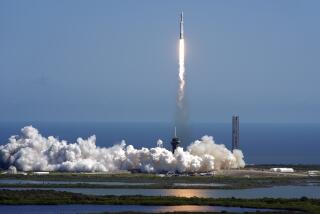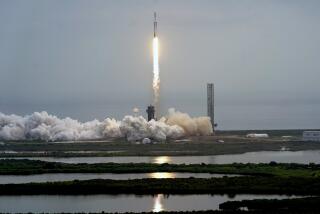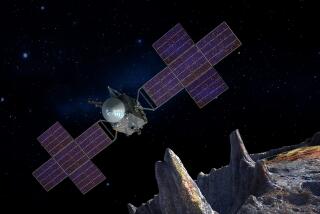NASA Launches Comet-Punching Probe
NASA’s Deep Impact spacecraft lifted off Wednesday from Cape Canaveral in Florida on the first stage of a six-month journey to intercept the comet Tempel 1.
When the craft reaches Tempel 1 near the orbit of Mars, it will fire a probe at the comet, digging out a crater deep enough to hold a 14-story building.
Scientists hope to discover what comets are made of and whether they are as hard as asteroids or as soft and mushy as gypsum.
Scientists also hope to uncover secrets of the early solar system by analyzing the ice and dust ejected when the bathtub-sized probe collides with the speeding comet.
The Deep Impact spacecraft was launched atop a Delta II rocket at 1:47 p.m. EST.
Reports from the spacecraft showed it had deployed its solar panels and oriented itself in space.
Early signals from the spacecraft indicated it was functioning normally.
Plans call for the craft to collide with the comet just short of Mars’ orbit on July 4 after a journey of 268 million miles. If the $328-million mission is successful, the resulting collision between the probe and comet will cause the comet to flare brightly enough that amateur astronomers should be able to see the celestial fireworks display with small telescopes.
Tempel 1, discovered in 1867 by astronomer Ernst Tempel, is about 9 miles long and about a third as wide. Its 5 1/2 -year orbit carries it between Mars and Jupiter.
Comets are largely made up of ice, gas and dust, but much is still unknown. Some scientists think they could be a loose accumulation of space flotsam so fragile that the probe could fly right through it.
More likely, the probe will be obliterated. It carries a camera that will continue taking pictures right up to the point of the crash.
The mother craft will stand off about 300 miles, taking pictures and using a spectrometer to analyze the ejected material.
Scientists said that even if a portion of the comet broke off, the collision was so far away that it would pose no hazard to Earth.
More to Read
Sign up for Essential California
The most important California stories and recommendations in your inbox every morning.
You may occasionally receive promotional content from the Los Angeles Times.










